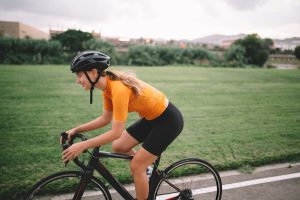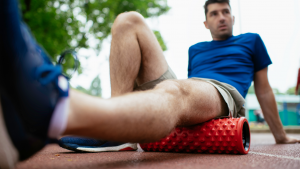No products in the cart.
4 Keys to Training in the Heat
Train Safely in the Heat
This time of year in the Southeast the
heat can be nearly unbearable but that doesn’t mean you have to stop training all together. During my threshold workout yesterday in the 95 deg, 100% humidity weather as the sweat was dripping on the top tube of my bike I thought, “what better time to discuss this than now!” Training can be done in nearly any climate but there are four key factors that need to be consider as you are training in the heat and they include your timing, intensity, hydration and clothing selection. Timing Timing is everything! If you have not been out in the heat of the day doing any type of exercise it is important to prepare your body for the stressors that will come. Gradually build up your time in the early morning rides and let your body acclimate to the longer bouts of training and increasing heat as the day progresses. If the heat of the day is the only time you have available to ride be sure to keep your initial rides short. Spending no more than 30 minutes in the heat the first week and drinking more fluids that you typically would on a ride will all help your body in the acclimation process and keep you safe. Intensity You might not be able to ride at any time other than the middle of the day when the sun is blazing down on you and you feel the 130 degree heat radiating off the jet black asphalt. This is no time to be out trying to accomplish your hardest VO2 workout. As your workload increases your muscles generate large amounts of heat and make it more difficult for your body to cool itself. Lowering intensity is helpful in maintaining a proper core temperature and can be instrumental in regulating body temperature. Hydration Whether it is hot or cold outside maintaining proper hydration levels is extremely important. We typically discuss this regarding peak performance because minimal changes in total body water can result in extensive decreases in performance. In this instance our goal is safety, not performance, and minimum intakes are usually thrown out the window. Several key notes to keep in mind is that a cold drink is absorbed into the body more easily but it also helps to cool your core. Either using insulated bottles and packing them with ice or stopping at filling stations more frequently will help keeping water cool. Clothing Long gone are the days of the extreme dehydration style workouts. Where athletes would “train” their bodies to work without fluids. As our knowledge of the human body has increased, so to has the clothing. now you will find lines purposed for varying weather conditions. The most basic information for clothing during the summer is that it should be something that “breathes” very well and is a thinner material. Base layers are worn year round now and there are some for cold weather and some for the heat. I personally wear a base layer year round and in the summer months I find it more advantageous. A base layer’s goal in the summer months is to effectively increase the body’s surface area, much like a car’s radiator, and aid in the evaporation process, which cools your body. You might find that the first few minutes of riding will feel a touch warmer until the base layer is wet with sweat but once that is accomplished you will begin to notice the differences. Signs of dehydration/heat exhaustion Preparing for your rides/events is crucial but sometimes the conditions are drastically different than what you have prepared for. Ironman Couer d’Alene this year was a perfect example. Athletes normally experience highs in the low to mid 80’s but for 2015 the high hit 108deg. There is no possible way that any athlete had properly prepared for this event, however, there were athletes that still finished the day. Many medics and officials were looking for several key signs that athletes were experiencing which included:
- Sweating cessation
- Chills
- Confusion
- Nausea, vomiting or diarrhea
- Dizziness
- Fainting
If you begin to experience any of these symptoms it is important to have someone who can help monitor you, seek cooler temperatures (air-conditioning is best), lower core temperature with a bath or other means such as fans or iced towels. The heat is nothing to joke about and if improper response to heat exhaustion is given it could result in severe injury or even death. Looking to improve your fitness even with the heat? One of our SoS coaches can assist you with your training, nutrition and hydration to make sure you are making the best decisions possible. LEARN MORE



